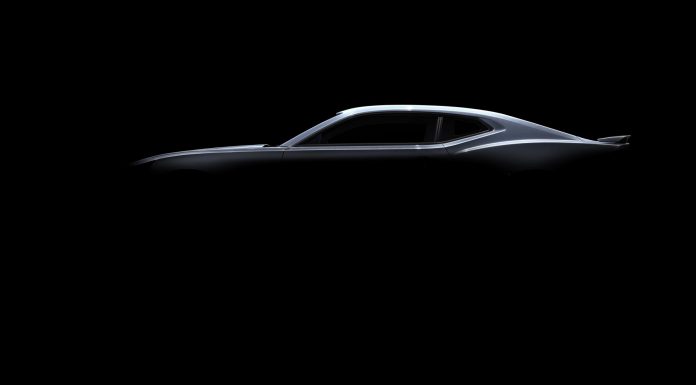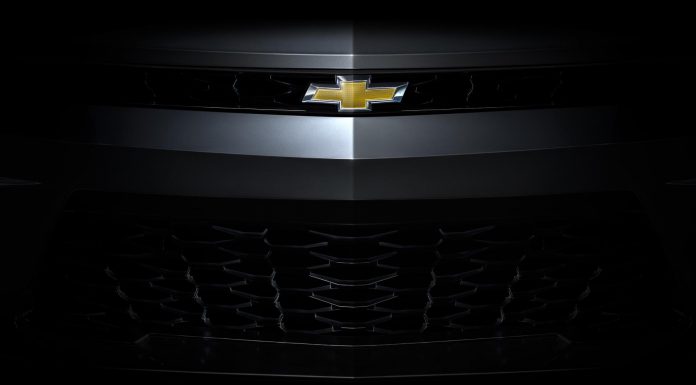A new teaser image of the sixth-generation 2016 Chevrolet Camaro set to debut on May 16 has just been released. This new image evidently shows the side profile of the new American muscle car and alongside it, the automaker has released details about the revised Camaro’s improved aerodynamics.
In creating the new Camaro, Chevrolet has conducted over 350 hours’ worth of wind tunnel testing. Initially, the 2016 Camaro was designed with low grille bars set at an angle of 20 degrees to the horizon. However, when the angle was changed to 13 degrees, engine-cooling airflow was improved by 1 per cent. Elsewhere, the 2016 Chevrolet Camaro includes a flat underside from the front grille to the centre of the car to reduce lift by 30 per cent alongside reducing drag.
Discussing the improved aero, exterior design manager Kirk Bennion said “The importance of aerodynamics increases exponentially as we increase vehicle performance. As engine output increases, we need more engine cooling. As acceleration and top speeds climb, we need to reduce lift for better high-speed stability. However, we cannot make any changes at the expense of increasing drag, which can hurt fuel economy. To balance these different aerodynamic targets, we tested literally hundreds of changes on the new Camaro, millimetres at a time.”
Elsewhere, it was recently confirmed that the 2016 Chevrolet Camaro SS will be available with an advanced magnetic ride control system once only available for the Camaro ZL1. Also on a dynamic front, Camaro SS owners will be provided with four different driving modes consisting of Snow/Ice, Tour, Sport and Track. Lesser Camaro variants will be available with the same modes except for track. Each different setting will tweak the steering, stability control, traction control and throttle mapping.
Additionally, it has been announced that the 2016 Chevrolet Camaro SS features a dual-mode exhaust system incorporating electronically controlled valves which open under hard acceleration. This exhaust setup will then be combined with a naturally-aspirated 6.2-litre V8 engine tuned to deliver between 430 and 450 hp putting it right in line with the 435 hp offered by the 2015 Ford Mustang GT.
[showhide]
“DETROIT – After 350 hours of wind tunnel testing – often 24 hours a day – the new Camaro will slip more easily through the wind, and drivers of the Camaro SS will experience a marked improvement in reduced aerodynamic lift.
These changes illustrate the lengths the aerodynamics team went to for improved performance, stability, cooling and lower wind noise intrusion
“The importance of aerodynamics increases exponentially as we increase vehicle performance,” said Kirk Bennion, Exterior Design manager. “As engine output increases, we need more engine cooling. As acceleration and top speeds climb, we need to reduce lift for better high-speed stability. However, we cannot make any changes at the expense of increasing drag, which can hurt fuel economy.
“To balance these different aerodynamic targets, we tested literally hundreds of changes on the new Camaro, millimeters at a time.”
For example, the initial design called for the lower grille bars to be set at a 20-degree angle to the horizon. However, after meticulous testing, the team improved engine-cooling airflow by 1 percent by shifting the angle to 13 degrees – a change that achieved the airflow target while maintaining the original grille design.
And rather than a traditional front air dam to reduce aerodynamic lift, the team developed a flush belly pan that stretches from the front grille to the center of the vehicle. Paired with small “spats” forward of the front tires, the smooth underbody helps reduce total lift by 30 percent – while also reducing aerodynamic drag.
Chevrolet will introduce the all-new, 2016 Camaro on Saturday, May 16, during a special public event at Detroit’s Belle Isle Park.”






























